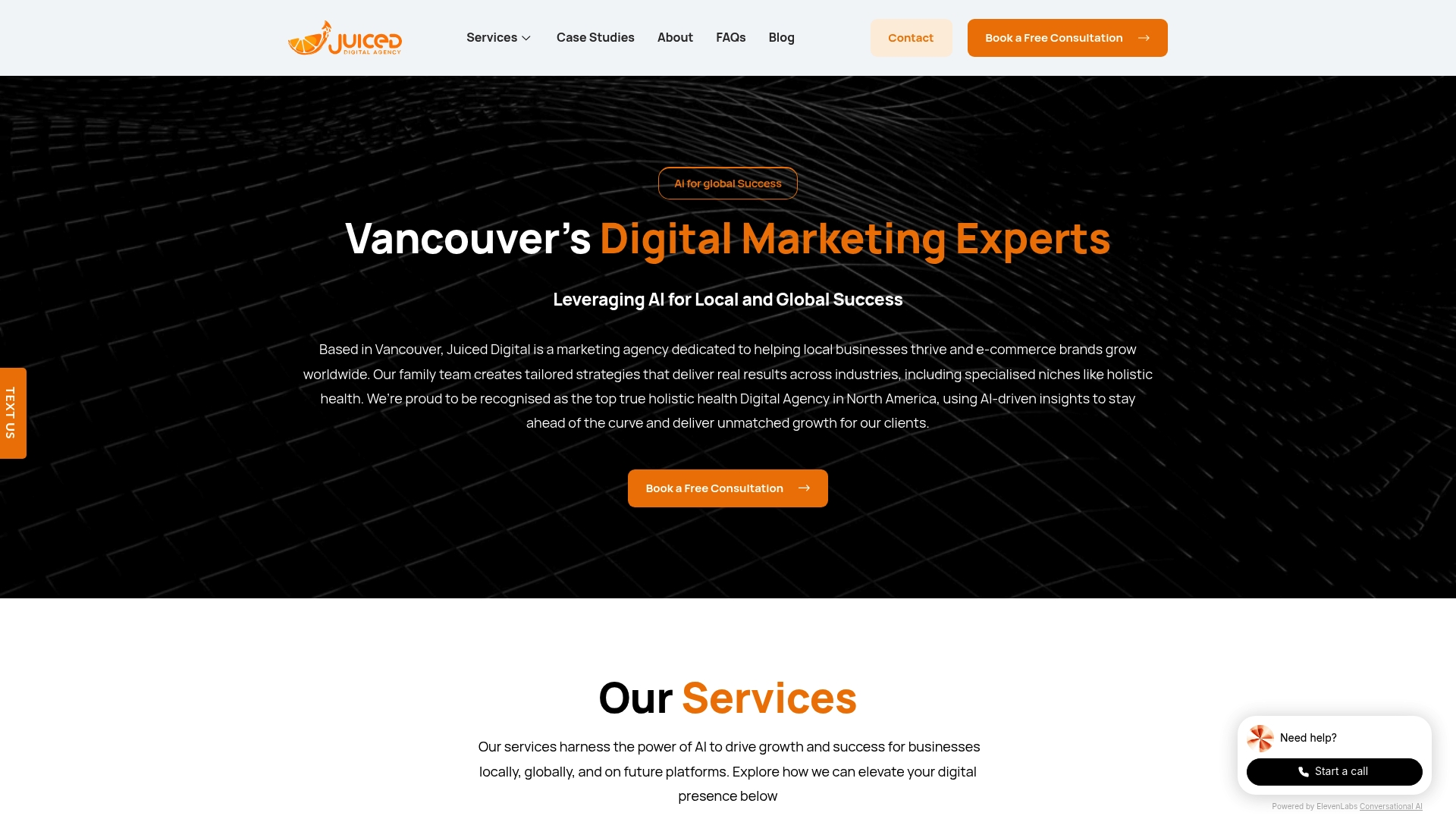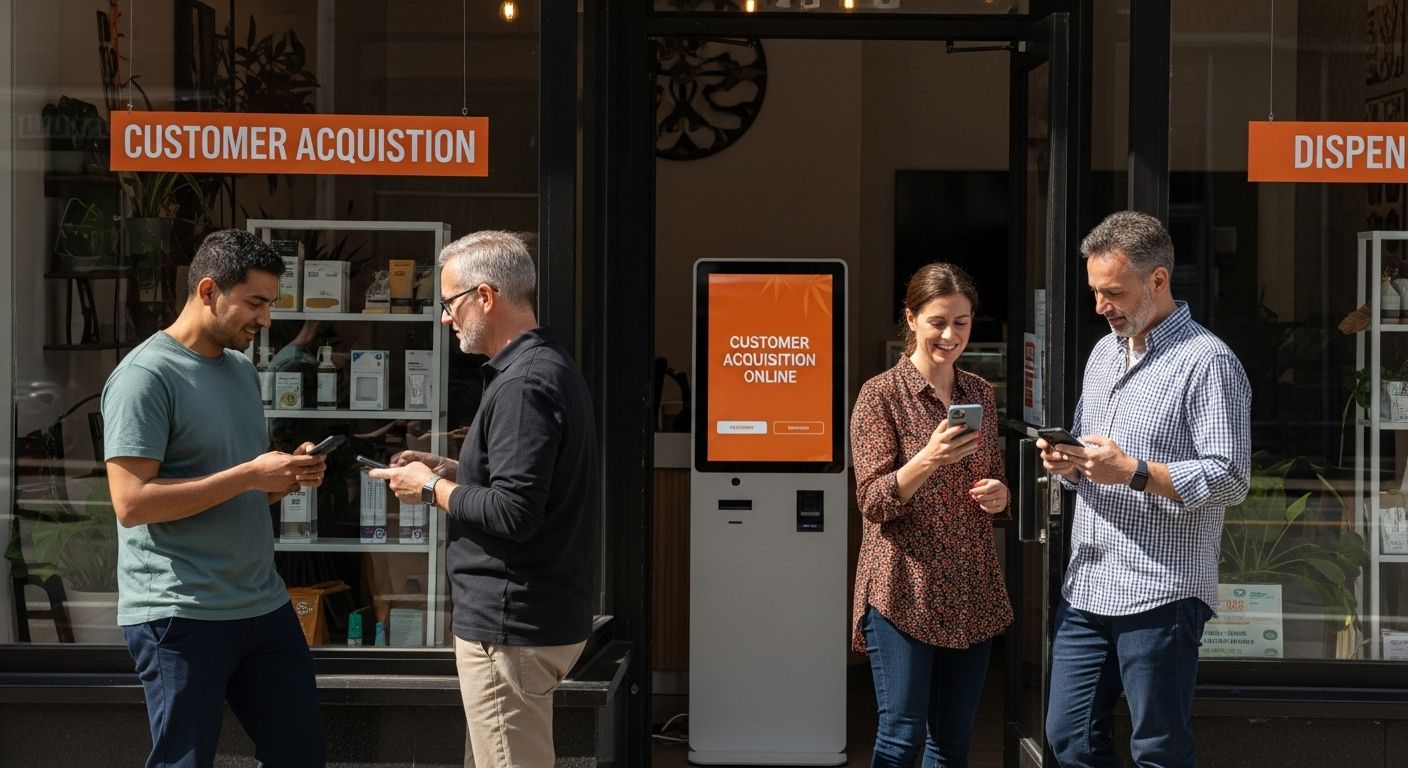Mobile optimization shapes how people connect with businesses every single day. Nearly 76 percent of people who search for a local business on their phone visit it in person within 24 hours. Many assume that a nice-looking site is enough. Actually, the true difference-maker is how effortlessly everything works on a small screen. There is a hidden layer of technical tweaks and design choices that can turn casual searchers into real customers when you get mobile right.
Table of Contents
- What Are Mobile Optimization Best Practices?
- Why Mobile Optimization Matters For Local Businesses
- Key Concepts In Mobile Optimization Explained
- How Mobile Optimization Influences SEO And User Engagement
Quick Summary
| Takeaway | Explanation |
|---|---|
| Optimize for various devices | Ensure your website performs well on all mobile screen sizes and capabilities. |
| Enhance loading speed | Fast-loading pages are crucial for user retention and decreased bounce rates. |
| Focus on user interaction design | Create large, easily tappable elements to enhance user experience on mobile. |
| Prioritize mobile SEO | Mobile-friendly websites rank higher in search results, increasing organic traffic. |
| Leverage local search optimization | Mobile optimization boosts visibility for local businesses and drives customer visits. |
What are Mobile Optimization Best Practices?
Mobile optimization represents a comprehensive approach to designing and adapting digital experiences specifically for smartphone and tablet users. At its core, mobile optimization ensures websites function seamlessly across various mobile devices, delivering an exceptional user experience that meets modern digital expectations.
Understanding Mobile User Experience
Mobile optimization goes beyond simple responsive design. Google recommends creating web experiences that dynamically adapt to different screen sizes and device capabilities. This means developing websites that not only look good but also perform efficiently on smaller screens with potentially slower internet connections.
Key considerations for mobile optimization include:
- Content Scalability: Text, images, and interactive elements must resize and reposition appropriately
- Touch-Friendly Interface: Designing clickable elements large enough for finger interactions
- Performance Speed: Ensuring rapid page loading times on mobile networks
Technical Elements of Mobile Optimization
Successful mobile optimization involves multiple technical strategies. Businesses must focus on creating lightweight, fast-loading pages that prioritize user experience. This includes compressing images, minimizing code, leveraging browser caching, and implementing responsive design frameworks.
The goal is creating a fluid, intuitive mobile experience that keeps users engaged. By understanding and implementing these mobile optimization best practices, businesses can significantly improve their digital presence and user satisfaction.
To clarify key differences and connections, the following table compares essential technical and design elements involved in mobile optimization.
| Aspect | Technical Element | User Experience Focus |
|---|---|---|
| Screen Adaptation | Responsive design; cross-device compatibility | Content scalability for various screens |
| Loading Speed | Performance optimization; image compression; caching | Frustration-free, fast experience |
| Touch Interactions | Code minimization; large tap targets | Intuitive, accessible, touch-friendly elements |
| Layout & Structure | Flexible frameworks; minimized resource usage | Simple, direct navigation |
| Accessibility | Following web accessibility guidelines | Easy to use for all abilities |
| Content Prioritization | Adaptive rendering; device detection | Key info visible and easy to act on |
For advanced strategies on improving your digital presence, read our guide on SEO quick wins for cannabis and ecommerce to complement your mobile optimization efforts.
Why Mobile Optimization Matters for Local Businesses
Mobile optimization has transformed from a competitive advantage to a critical necessity for local businesses seeking sustainable digital growth. In an era where smartphones are the primary internet access point, businesses must recognize the profound impact of mobile-friendly digital experiences on customer engagement and revenue generation.
The Economic Impact of Mobile Accessibility
Research shows that nearly 76% of people searching for local businesses on their smartphones visit a physical location within one day. This statistic underscores the direct correlation between mobile optimization and real-world customer conversions.
 Local businesses that neglect mobile user experience risk losing significant market share to more digitally adaptive competitors.
Local businesses that neglect mobile user experience risk losing significant market share to more digitally adaptive competitors.
Key economic implications include:
- Increased Customer Reach: Mobile-optimized sites attract a broader audience
- Higher Conversion Rates: Seamless mobile experiences encourage immediate action
- Improved Local Search Rankings: Google prioritizes mobile-friendly websites
Strategic Competitive Advantage
Beyond immediate economic benefits, mobile optimization represents a strategic positioning tool. Businesses that invest in robust mobile experiences signal technological sophistication and customer-centricity. This approach goes beyond aesthetic considerations, encompassing performance, accessibility, and intuitive design.
For comprehensive strategies on enhancing your digital presence, explore our local business SEO guide to complement your mobile optimization efforts. By understanding and implementing these practices, local businesses can transform digital interactions into meaningful, revenue-generating connections.
This table organizes the main economic and strategic business benefits of mobile optimization for local businesses.
| Benefit Type | Impact Description |
|---|---|
| Increased Reach | Attracts a broader customer base through better mobile accessibility |
| Higher Conversions | Seamless experiences encourage immediate actions and purchases |
| Improved Search Ranking | Google gives preference to mobile-friendly, optimized sites |
| Market Differentiation | Distinguishes business as technologically advanced and customer-focused |
| Revenue Generation | Directly correlates with increased visits and spending |
| Sustained Growth | Supports ongoing customer acquisition and retention |

Key Concepts in Mobile Optimization Explained
Mobile optimization represents a sophisticated digital strategy that transcends simple visual adaptation, encompassing technical, design, and user experience considerations. Understanding its core concepts enables businesses to create truly engaging digital environments that perform seamlessly across diverse mobile devices.
Technical Foundation of Mobile Optimization
Web accessibility guidelines provide critical frameworks for developing mobile-friendly digital experiences. These standards emphasize creating interfaces that are not just visually appealing, but functionally robust across different screen sizes, input methods, and user capabilities.
Key technical foundations include:
- Responsive Design: Automatically adjusting layout and content based on device characteristics
- Performance Optimization: Minimizing load times and resource consumption
- Cross Device Compatibility: Ensuring consistent functionality across smartphones, tablets, and different operating systems
User Experience and Interaction Design
Mobile optimization centers on creating intuitive, frictionless user experiences. This means designing touch-friendly interfaces with large, easily tappable elements, minimizing complex navigation structures, and prioritizing content that loads quickly and renders cleanly.
Interaction design becomes critical in mobile contexts, where users have less screen real estate and potentially slower connection speeds. Businesses must streamline their digital interfaces, removing unnecessary steps and creating clear, direct paths to information or transaction completion.
For deeper insights into optimizing your digital strategy, explore our SEO strategies for boosting organic traffic, which complement mobile optimization techniques and provide comprehensive digital growth approaches.
How Mobile Optimization Influences SEO and User Engagement
Mobile optimization plays a pivotal role in determining digital visibility and user interaction, serving as a critical intersection between technical performance and search engine ranking strategies. Understanding this relationship reveals how technical optimization directly impacts online business success.
Search Engine Ranking Dynamics
Google’s mobile-first indexing fundamentally transformed digital visibility by prioritizing mobile website versions for search rankings.
This means that websites not optimized for mobile devices face significant disadvantages in search result placements, potentially losing substantial organic traffic and potential customer interactions.
Key SEO ranking factors include:
- Page Loading Speed: Faster mobile sites receive preferential treatment
- Mobile Responsiveness: Websites that adapt seamlessly across devices
- User Experience Metrics: Measuring engagement and interaction quality
User Engagement and Conversion Dynamics
Mobile optimization directly correlates with user engagement metrics. Websites that provide smooth, intuitive mobile experiences encourage longer visit durations, reduced bounce rates, and increased conversion potential. Users are more likely to interact with and trust digital platforms that demonstrate technical sophistication and user-centric design.
Engagement optimization transcends visual aesthetics, encompassing performance, accessibility, and intuitive navigation. Businesses must create mobile experiences that feel natural, responsive, and effortless across diverse user contexts and device capabilities.
Explore our mobile SEO guide for dispensaries and ecommerce to gain deeper insights into advanced optimization strategies that can transform your digital presence and user interaction models.
Ready to Secure Your Competitive Edge with Mobile Optimization?
Businesses today face a hard truth. Mobile-optimized websites are no longer just optional—they are essential for staying visible and relevant in a world where most users search and shop with their smartphones. The pain of lost conversions, higher bounce rates, and slipping down search rankings is real for companies stuck with slow or unresponsive mobile sites. The article explains that intuitive design, technical performance, and seamless user experience are crucial for capturing leads and staying ahead.
Visit our Digital Marketing insights to see how we put the latest mobile optimization best practices into action for companies just like yours.

Take the next step toward measurable growth. Juiced Digital has the expertise and advanced strategies to transform your mobile experience and drive ROI-focused results. Don’t let your competition pass you by—contact our team now to unlock the benefits of mobile-first SEO and claim your place at the top of local and national search rankings.
Frequently Asked Questions
What is mobile optimization?
Mobile optimization is the process of adjusting websites to provide a seamless experience for users on smartphones and tablets. It involves the design and technical strategies that ensure a website works efficiently across various mobile devices.
Why is mobile optimization important for businesses?
Mobile optimization is crucial for businesses as it enhances user experience, improves local search rankings, and significantly increases conversion rates. With a large number of users accessing the internet via mobile devices, an optimized website can attract and retain potential customers effectively.
How does mobile optimization affect SEO?
Mobile optimization directly impacts SEO through Google’s mobile-first indexing, which prioritizes mobile-friendly websites in search rankings. This means that an optimized mobile site can lead to better visibility and more organic traffic, while neglected sites may fall behind competitors.
What are some best practices for mobile optimization?
Best practices for mobile optimization include using responsive design, ensuring fast page loading times, creating touch-friendly interfaces, and prioritizing content scalability. Implementing these strategies helps create an engaging and efficient user experience across mobile devices.
Recommended
- Top 10 SEO Strategies to Boost Organic Traffic in 2024 – Digital PR Expert | Digital Marketing & Search Leaders
- What Is Mobile SEO? Guide for Dispensaries & Ecommerce 2025 – Digital PR Expert | Digital Marketing & Search Leaders
- Site Architecture for SEO: Boost Local and Cannabis Stores 2025 – Digital PR Expert | Digital Marketing & Search Leaders
- Top SEO Quick Wins for Cannabis and eCommerce in 2025 – Digital PR Expert | Digital Marketing & Search Leaders



